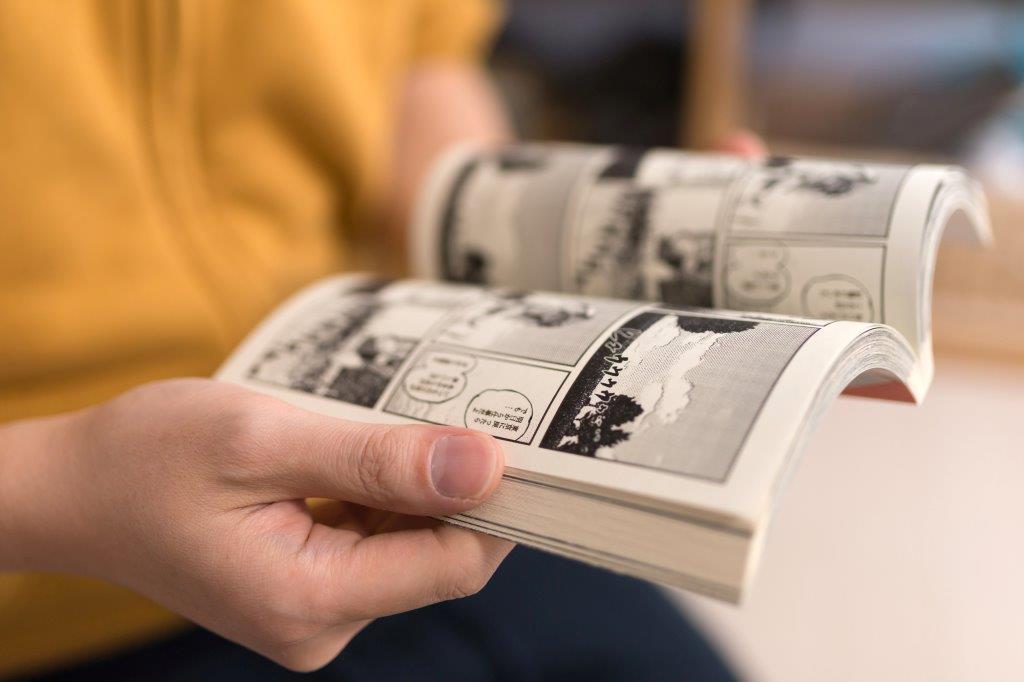It can be intimidating to start a new language, but with the right tools, a big task will become a lot less daunting. This article covers how to use textbooks and Anki to quickly build a solid foundation in Japanese. Textbooks are a fantastic way to get started learning a new language, but you need to know how to use them correctly. Textbooks are a fantastic way to get started learning a new language; you just need to know how to use them. You may be put off by the idea of using a textbook because it reminds you of school, but language textbooks are not nearly as dry as math textbooks. They offer a lot of structure and will slowly introduce new grammar and vocabulary. This is great, especially for a complex language like Japanese. This guide uses the Genki textbook, but you can apply a lot of the information to any textbook; you will just have to find or make your own Anki cards. Below are the resources necessary to get started using Genki. Genki is a very dense book, so if you find it too difficult, then you can try the Japanese from Zero series. Japanese from Zero eases you into Japanese very slowly with a lot of explanation. However, if you follow the instructions below, Genki should be easy to follow.
When going through a textbook lesson I recommend starting by reading through the lesson first and then watching the explanation video. You should also be studying the vocabulary flashcards alongside the main lesson. When you have gone through the lesson, videos, and vocabulary, then you should study the sentence flashcards. However, you may alter the order of study depending on what works best for you.
When you first start a Genki lesson, it will present you with a dialogue. Read the dialogue out loud to the best of your ability. You are not expected to be able to understand it all; it is a preview of what will be covered in the lesson.
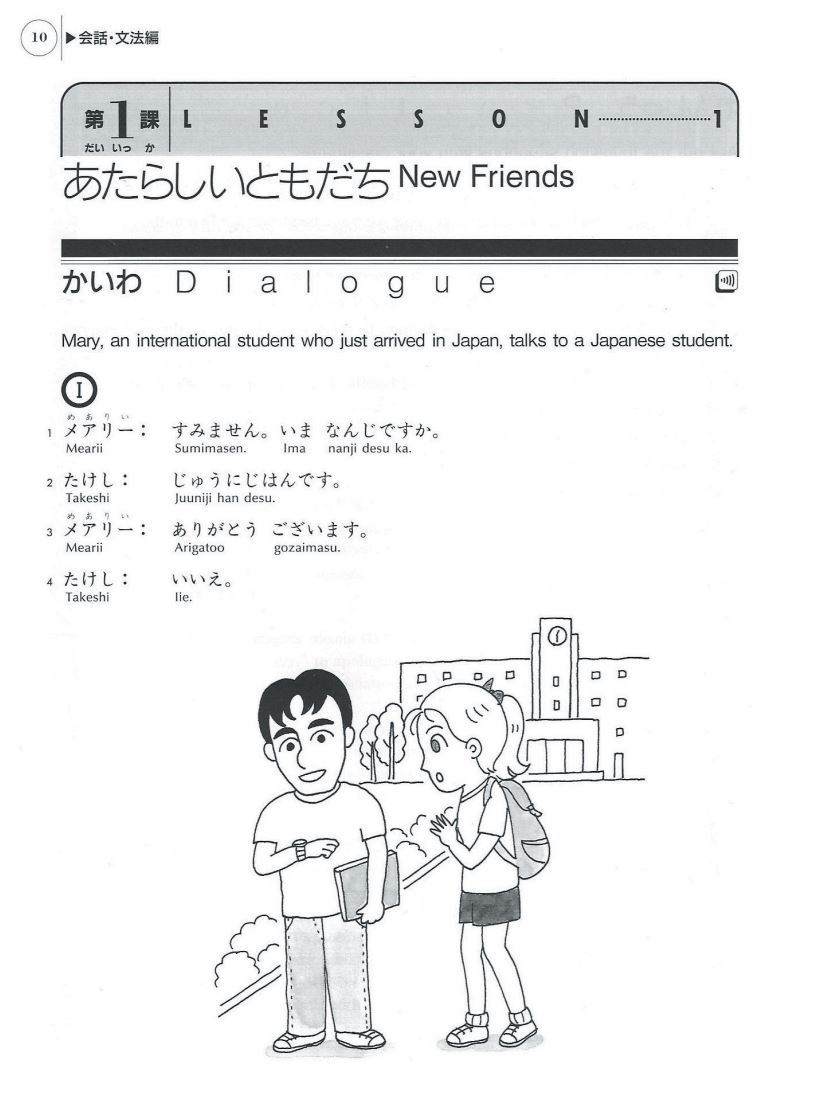
Next, you will be presented with a list of vocabulary. Briefly read through the vocabulary to get an idea of what will be in the lesson. This is a good place to start studying vocabulary flashcards, but you do not need to go through all the vocabulary flashcards before reading the rest of the lesson. You will pick up a lot of the vocabulary you need through context as you read through the lesson. Vocabulary is also not something that should be crammed. You should only study as much as you feel you can remember.
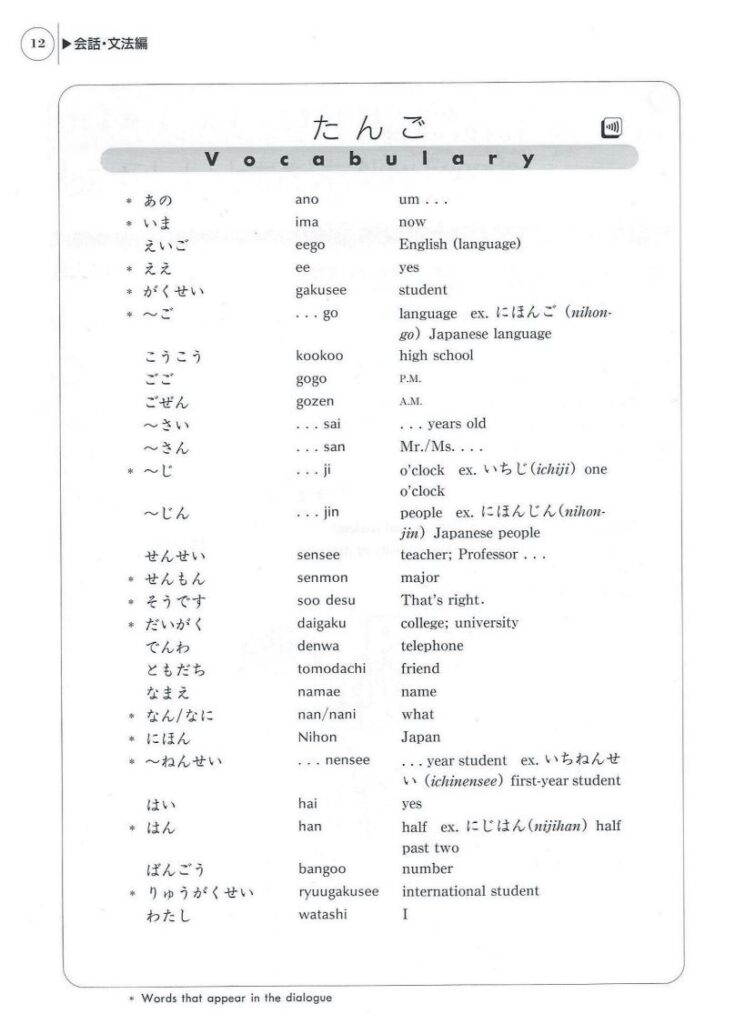
Next, you’ll come to the grammar section. Read through the explanation and sentences. This is just your first introduction to these grammar patterns. It’s great if you immediately understand them, but also ok if you don’t. You will review these sentence patterns again when you watch the video and when you go through the sentence flashcards.
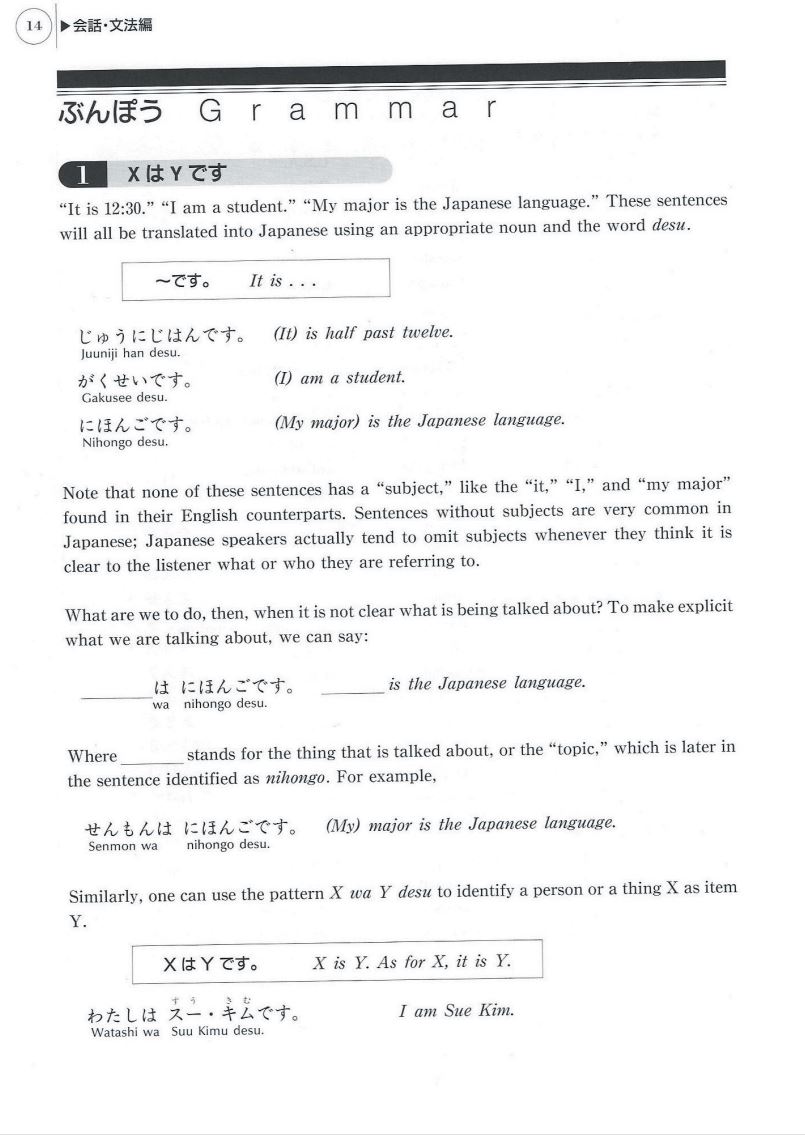
Genki also has a variety of practice exercises. Doing exercises such as the one below is a great way to start making sentences. In this exercise, simply plug vocabulary words into the example sentence. You can either write down your answer or say it out loud. Also, you can always refer back to the vocab list for these exercises, since you don’t have all the words memorized yet. The point of these exercises is to build familiarity.
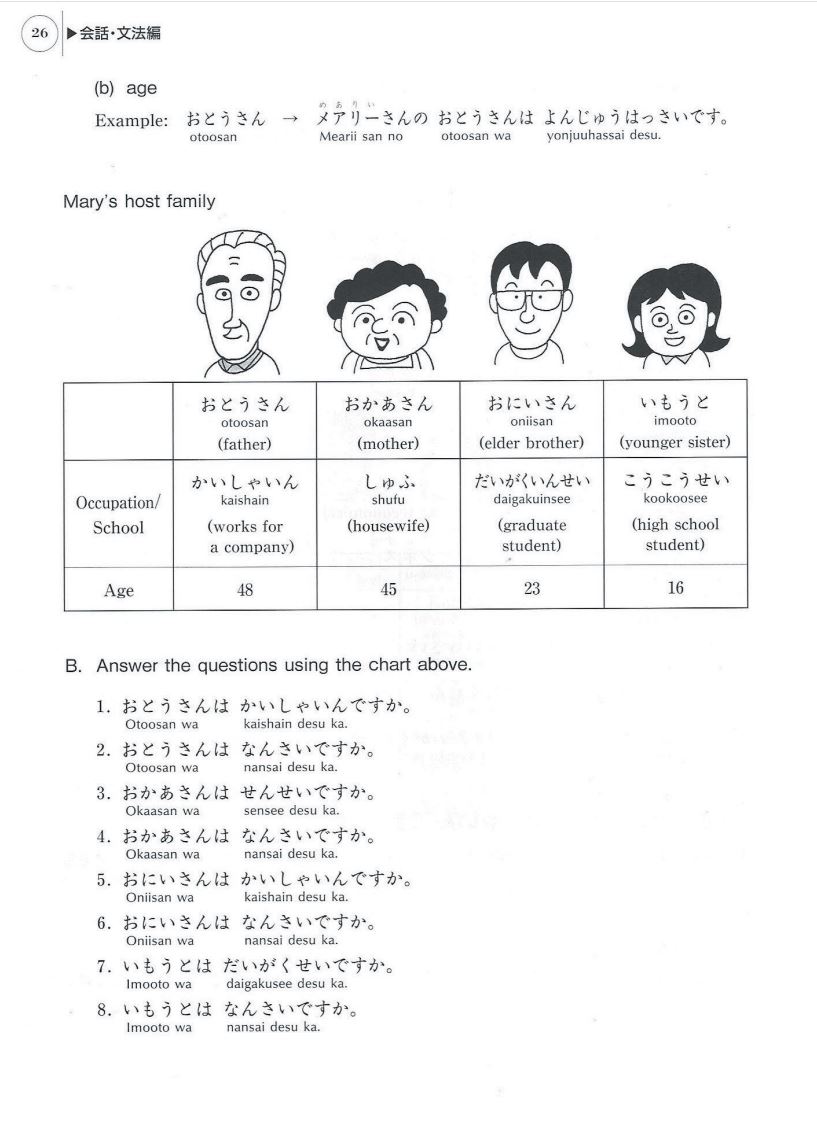
Group activities are also included in Genki. I usually skip these when self-studying, but you can use them as prompts if you would like.
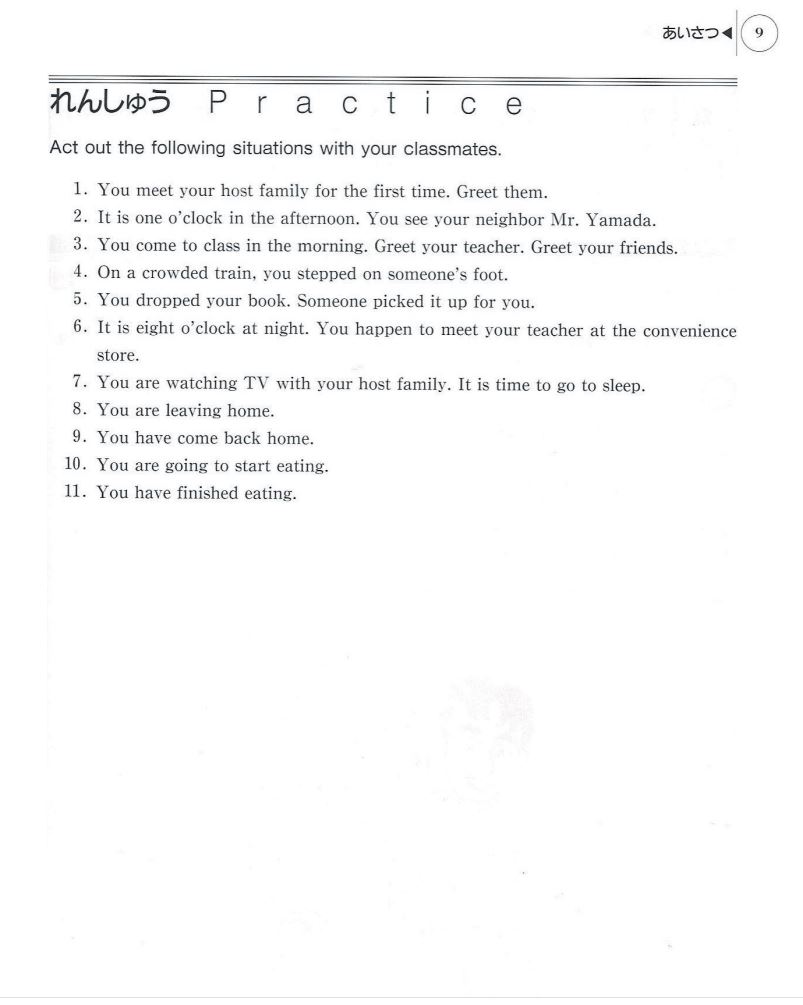
The videos below will help you review the grammar for each Genki lesson. Watch these to reiterate what you read in the lesson. Don’t worry too much about understanding every word, you will review all of this information multiple times. Also, some of the example words he uses in the video are words you probably haven’t seen yet. Don’t worry about memorizing them, you’ll see them again later. Click on view on YouTube in the lower right corner of the video to see the full playlist with all lessons. If you are using Japanese from Zero you can CLICK HERE to see the explanation videos for that series.
Vocabulary cards should be studied alongside the main lesson since vocabulary is best picked up over time with repetition. You can download the vocabulary flashcards by going to “textbook resources,” or you can download the Anki shared deck; however, you do not need to download both! When you open the deck, it will look like the image below. The default is set to 10 new cards per day, but you can increase this limit if you would like to progress faster. For more information, check out the article “How to use Anki” below.

When you first begin the deck, you will be presented with common phrases in hiragana. There is no romaji in this deck, as romaji is only for the purpose of learning hiragana and katakana. This deck will force you to practice your hiragana, so you get better at reading and typing—two vital skills for learning Japanese.

In the space provided, type out the hiragana for the word to practice typing hiragana while learning the new word. If you don’t know how to type in Japanese yet, check out the article below.

On the back of the card, it will show you if you typed the word correctly, as well as give you the translation. Grade yourself based on how well you could read, type, and understand the word.

Later in the deck, you will start to see more advanced vocabulary and sentences with kanji. It is important to start learning kanji with new words, as it will greatly increase your ability to read and understand Japanese. Here the top word is the new vocabulary word and underneath it is an example sentence. In the beginning, don’t worry too much about understanding each example sentence, your goal is to understand the vocabulary word first, and the example sentence will become more understandable as you review your cards. Type out the hiragana for the vocabulary word in the provided space. This will check your ability to read the presented word.

Grade yourself on how well you were able to recall the reading for the vocabulary word. In the example below, I forgot that it was a long い, but I got most of the word correct, so I would probably give myself a “good.” If I struggled to remember the word, then I would grade it as “hard.”

You will also see cards where you are presented with the example sentence with the vocabulary word removed and the English translation. For these cards, your goal is to recall the vocabulary word and type it in its most common form, whether that be kanji, hiragana, or katakana.

On the back, you will see the kanji, hiragana, and a complete example sentence. Grade yourself based on how well you were able to recall the Japanese word.

Note that as you work your way through this deck, you will see a variety of sentences with different levels of politeness and sometimes with the subject dropped. The Genki textbooks focus heavily on polite Japanese, so this may be a bit odd at first, but you will quickly learn the difference between the politeness levels. I believe it’s good to learn the different politeness levels early, as most native resources will use a mix of both. For example, the sentence below is in casual Japanese since there is no ending particle (ie です). Sentences that end in the dictionary form a verb, end in “だ,” or have no ending particle are casual. Sentences that end in “ーます” or “です” are polite.
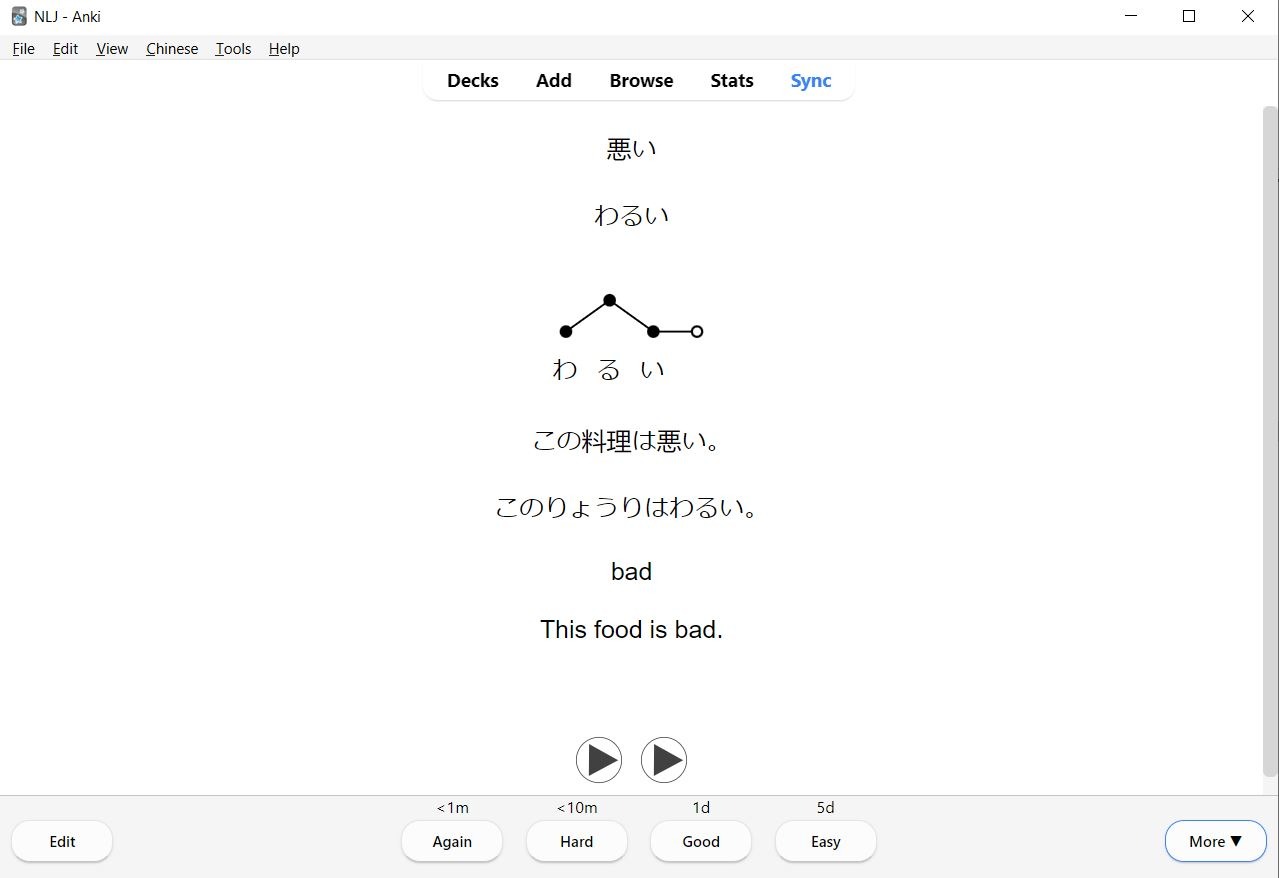
Sentences will also often have the subject dropped. Since Japanese is a highly contextual language, anything that comes before the particle “は” is usually dropped if the subject of the sentence is already clear from context. If a subject hasn’t already been established, then it is assumed the speaker is talking about themselves. Take the sentence on the card below, for example, “日本語がわかる” is a complete sentence in Japanese, even though it wouldn’t be in English. That is because in Japanese, the speaker is assumed to be the subject, as seen in the translation “I understand Japanese.” However, in a real conversation, it may be that the speaker is talking about someone else, but because we don’t have more context, we can’t assume that.

Some sentences use “彼” (he) and “彼女” (she) to add context that we’re talking about another person. However, be aware that these words are rarely used in actual Japanese, and they are only used here to make it easier for learners to understand and translate the sentence. In spoken Japanese, you would generally use someone’s name or drop the subject altogether. For example, instead of saying “彼は若いです,” I would say “たけしさんは若いです” to specify that I was talking about Takeshi being young, or if we were already talking about Takeshi and it’s clear that’s who I’m talking about, I would just say “若いです.” This is why you should be getting input from native sources alongside your Anki studies. Textbooks and flashcards will help you become familiar with vocabulary and grammar, but to learn actual Japanese, you need native input.

After you have completed the main lesson and gone through most of the vocabulary, you are ready to start studying the Genki sentence deck. Start by opening the deck from the Anki main screen. If you don’t have the deck downloaded, it can also be found in “textbook resources.”

There are two types of sentence flashcards. The first will present you with a sentence in Japanese and ask you to read it. I recommend reading it out loud to the best of your ability. Grade yourself on how well you were able to read and understand the sentence. It doesn’t help if you can read it but don’t understand it, and vice versa.
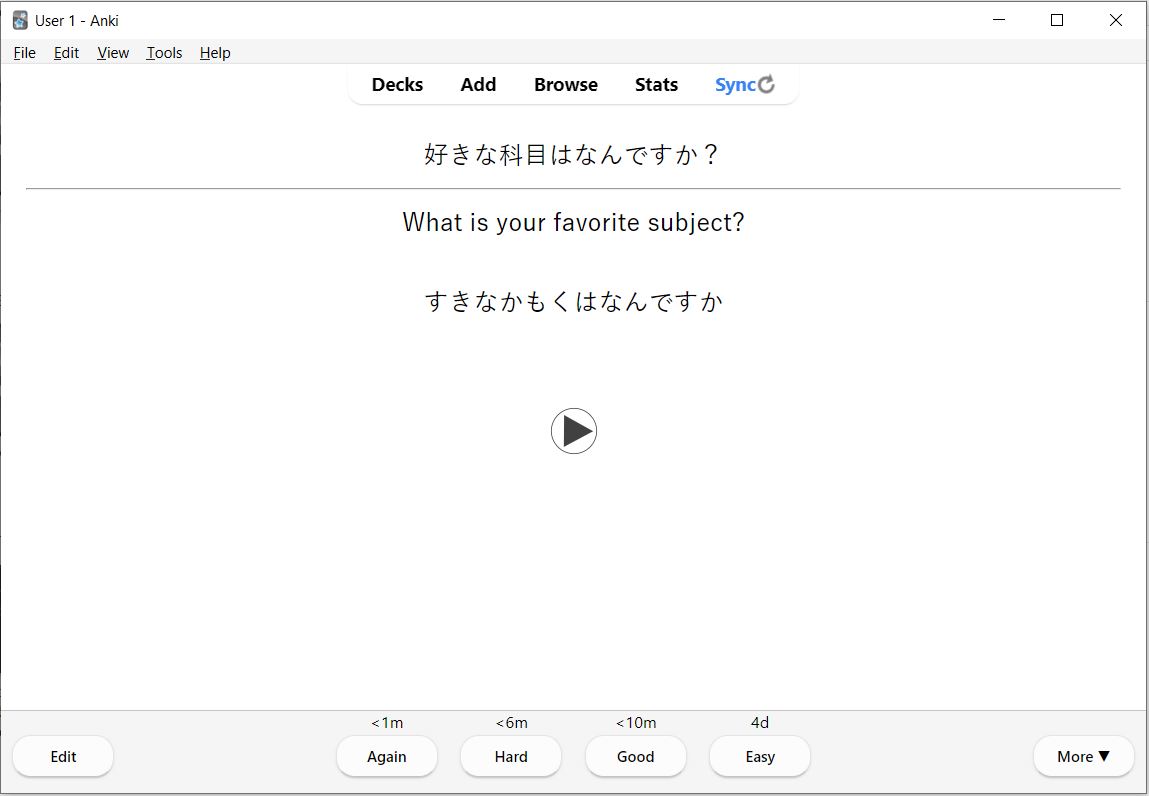
The second type of sentence card is for practicing your listening abilities. Grade yourself on how well you were able to understand the sentence and its components. You can alter the number of new sentences you see each day in the deck options. You may alter it a few times until you find a place you’re comfortable. Continue studying sentences until you reach a point where the words and grammar are unfamiliar, then move on to the next lesson.
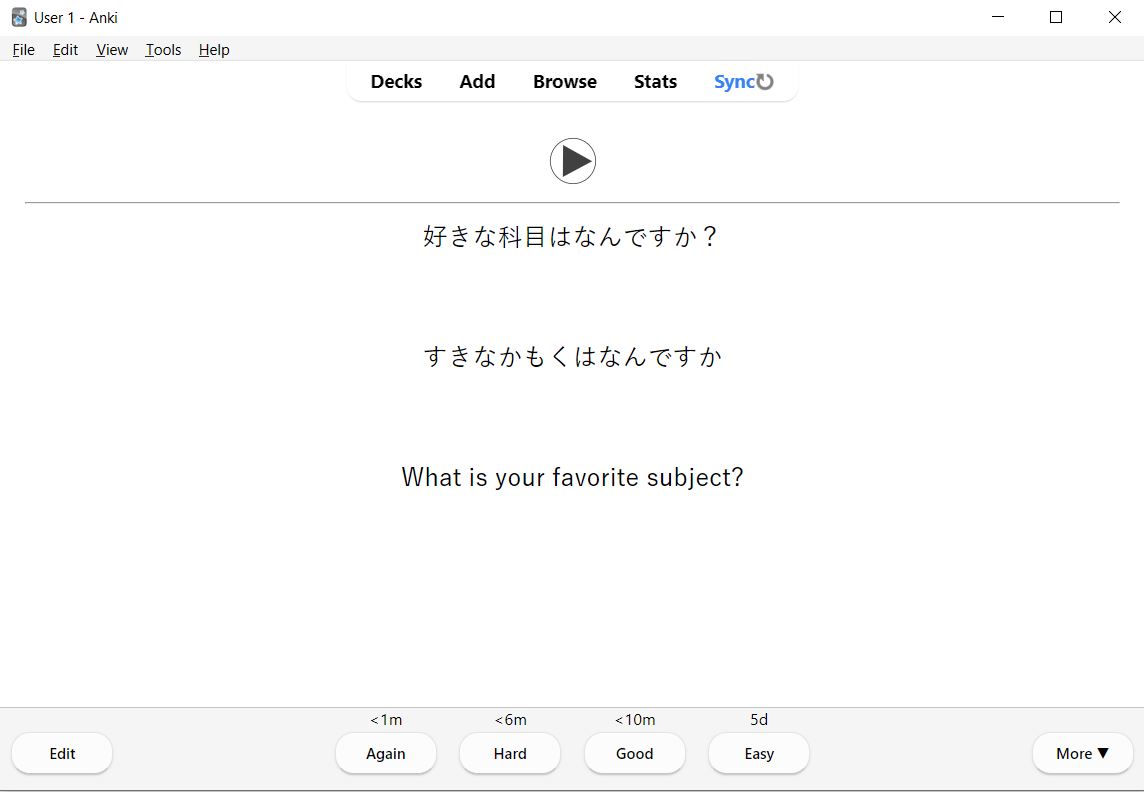
You will notice that the flashcards have kanji starting pretty early. This is to get you used to reading kanji as early as possible. Kanji is one of the hardest parts of Japanese, so learning it early will make it a lot easier when you want to use native sources later. For early sentence flashcards, there will be hiragana provided on the back side of the card, but eventually, that hiragana will also disappear. If you come across a kanji you don’t know, copy it, and look it up in a Japanese-English dictionary. You will spend a lot of time looking up words in the dictionary, so this is great practice for later. If you would like to add hiragana to a card, press “edit” and add it yourself. If you find that the sentence cards are too difficult and you’re struggling with them, you can do additional practice before returning to the sentence cards.

If you would prefer not to use a textbook and learn grammar as you go along, then you can do that, however, the lack of structure may be a little overwhelming. If you’re interested in learning grammar as you come across it, then check out the following article on Japanese grammar websites.



